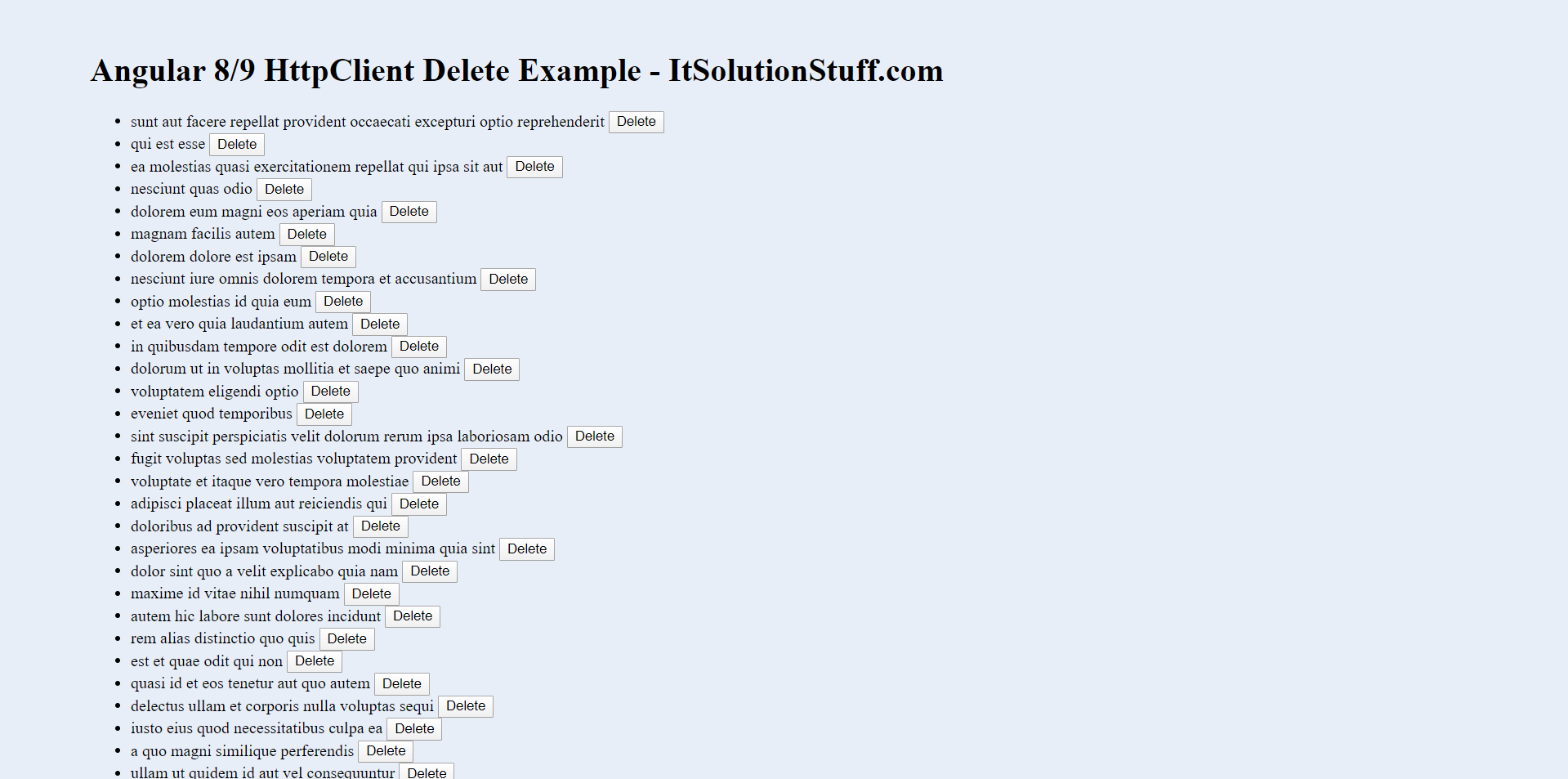Angular HttpClient Delete Example | Angular Http Delete Request Example
In this tutorial, i will show you angular 9 http delete request example. we will help you to give example of angular httpclient delete request body example. it's simple example of angular http delete service example. I’m going to show you about http delete request example in angular. Here, Creating a basic example of httpclient delete request example angular.
You can easily run delete request api for remove item in angular. you can also use delete api in angular 6, angular 7, angular 8, angular 9, angular 10, angular 11, angular 12, angular 13, angular 14, angular 15, angular 16 and angular 17.
Here, i will give you very simple example to delete record using api using delete request api. we will use jsonplaceholder api for testing now. so we don't require to create new api for it.
So, let's see bellow example step by step how to delete http service and how to use it.

Step 1: Create New App
You can easily create your angular app using bellow command:
ng new my-new-app
Step 2: Import HttpClientModule
In this step, we need to import HttpClientModule to app.module.ts file. so let's import it as like bellow:
src/app/app.module.ts
import { BrowserModule } from '@angular/platform-browser';
import { NgModule } from '@angular/core';
import { AppComponent } from './app.component';
import { HttpClientModule } from '@angular/common/http';
@NgModule({
declarations: [
AppComponent
],
imports: [
BrowserModule,
HttpClientModule
],
providers: [],
bootstrap: [AppComponent]
})
export class AppModule { }
Step 3: Create Service for API
Here, we need to create service for http client request. we will create service file and write client http request code. this service will use in our component file. So let's create service and put bellow code:
ng g s post
Now let's add code as like bellow:
src/app/post.service.ts
import { Injectable } from '@angular/core';
import { HttpClient } from '@angular/common/http';
@Injectable({
providedIn: 'root'
})
export class PostService {
private url = 'https://jsonplaceholder.typicode.com/posts';
constructor(private httpClient: HttpClient) { }
getPosts(){
return this.httpClient.get(this.url);
}
deletePost(id){
return this.httpClient.delete(this.url+'/'+id);
}
}
Step 4: Use Service to Component
Now we have to use this services to our app component. So let's updated code as like bellow:
src/app/app.component.ts
import { Component, OnInit } from '@angular/core';
import { PostService } from './post.service';
@Component({
selector: 'app-root',
templateUrl: './app.component.html',
styleUrls: ['./app.component.css']
})
export class AppComponent implements OnInit {
posts;
constructor(private service:PostService) {}
ngOnInit() {
this.service.getPosts()
.subscribe(response => {
this.posts = response;
});
}
deleteItem(post){
this.service.deletePost(post.id)
.subscribe(response => {
this.posts = this.posts.filter(item => item.id !== post.id);
});
}
}
Step 5: Updated View File
Now here, we will updated our html file. let's put bellow code:
src/app/app.component.html
<h1>Angular 8/9 HttpClient Delete Example - ItSolutionStuff.com</h1>
<ul class="list-group">
<li
*ngFor="let post of posts"
class="list-group-item">
{{ post.title }}
<button (click)="deleteItem(post)">Delete</button>
</li>
</ul>
Now we are ready to run our example, you can run by following command:
ng serve
I hope it can help you...

